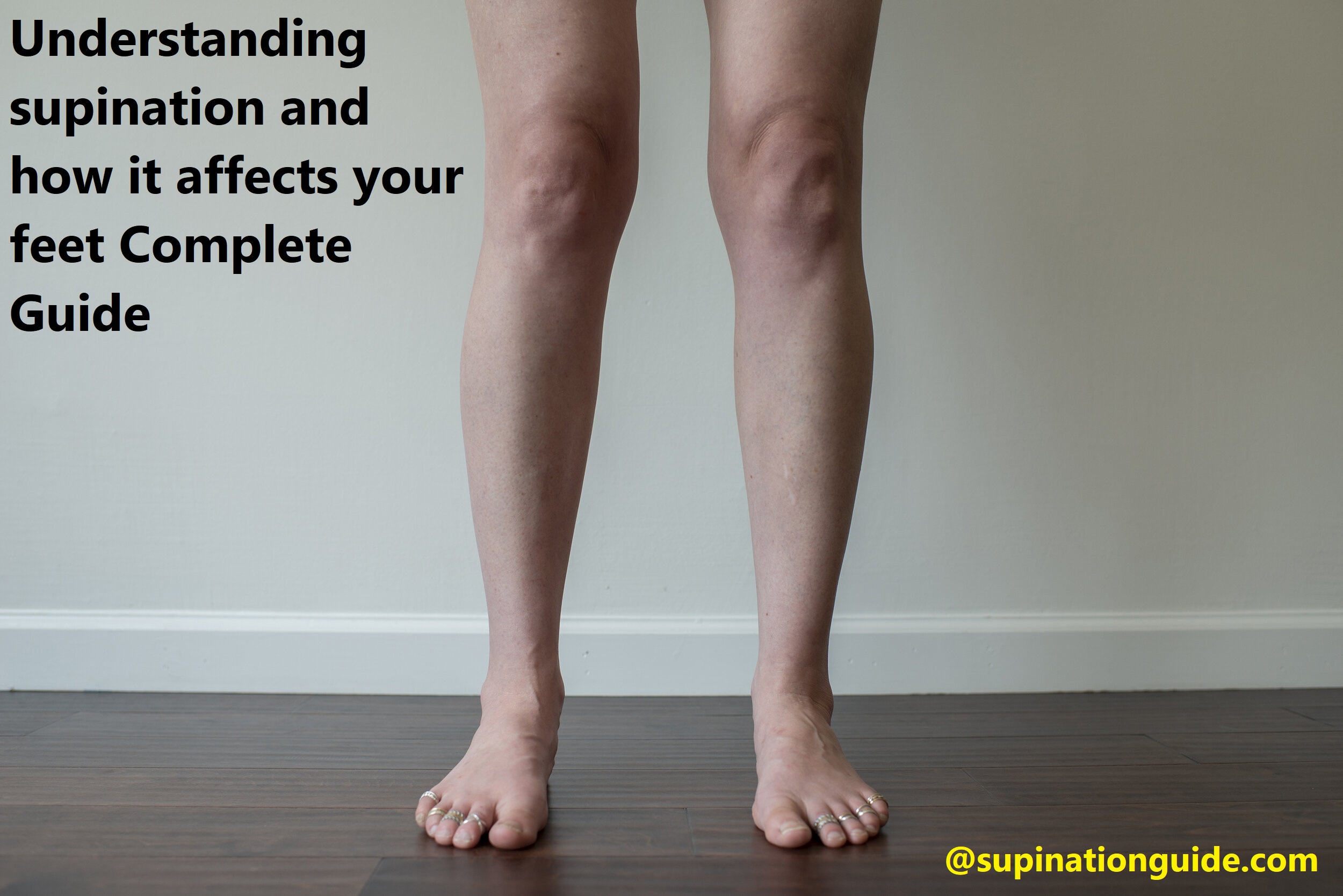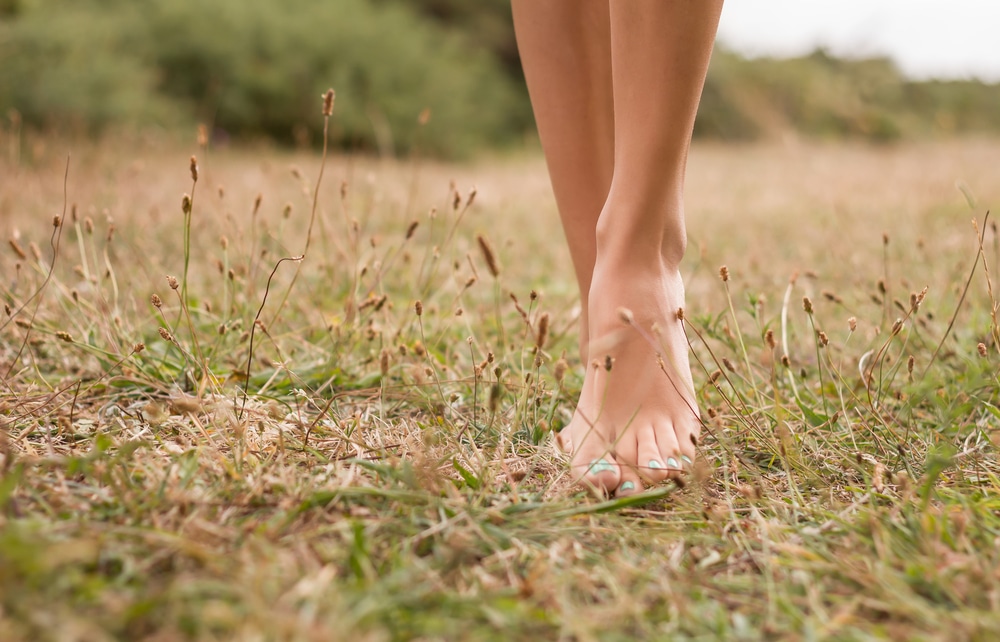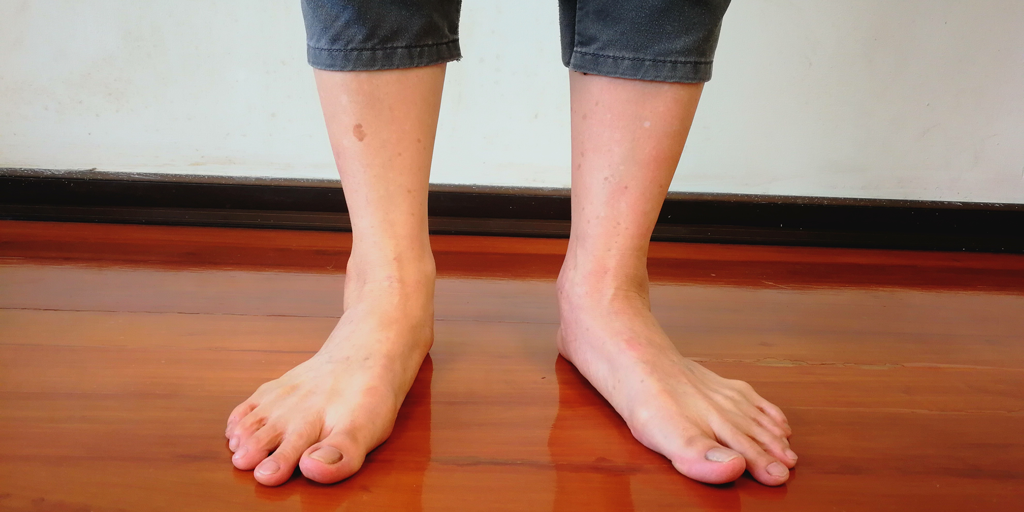Has your foot ever felt tender and stiff after a long walk? That could be the result of a common movement pattern known as supination. In this guide, you’ll learn more about the issue, how it can affect your feet, and what you can do to treat it.
Get ready to gain a deeper understanding of why taking care of your feet is so important!
Welcome to the understanding supination and how it affects your feet complete guide. This guide provides a thorough understanding of the mechanics of normal foot movement and gait, as well as what occurs when you suffer from excessive foot pronation or supination. Whether you’re looking for insight on why your balance suffers or need help deciding which shoe will best accommodate your needs—this guide has you covered.
The meaning of “supination” may be unclear to those who haven’t encountered it before outside of medical contexts. Though the terms can get confusing and seem overly technical, it’s important to understand them in order know how this common condition could affect your feet. So let’s take a look at some definitions for proper context:
Pronation: A range of motion that occurs in the foot during normal walking or running—and usually involves an inward roll of the foot from heel strike to toe-off —in which the arch compresses and the lower leg rotates slightly inwardly (medially).
Supination: The term refers to a type of excessive pronation that compresses or flattens the arch and externally (laterally) rotates both legs. It often causes reduced balance, increased energy output due over-stretching calf muscles, decreased support underfoot, weakened arches, essentially allowing an individual’s gait pattern an excessive amount of movement with every step they take.
Understanding Supination
Supination is a term used to describe the way your feet roll outward when you walk. The abnormality can cause issues like ankle sprains, shin splints, and even pain in the arch of your foot if left untreated. Left unchecked, supination can contribute to more severe conditions such as plantar fasciitis, bunions, and tendonitis.
When one has normal pronation (the opposite of supination), the heel hits the ground first and spreads out the impact evenly. However, supinated feet roll slightly outward from heel contact to toe off, causing extra strain on certain areas of the foot such as the outside edge or arch of the foot. This could lead to increased pressure on ligaments and muscles that support your foot while walking or running. This extra stress could leave you feeling pain in these areas after walking or running for an extended period of time.
That which causes over-supination is often due to abnormal muscle tension or weakness in either the lower leg muscles on either side of your calf or weak muscles under your feet – we will discuss this further below! Overpronating may also be caused by tight calves or a tight Achilles tendon. While there are many potential reasons for an individual’s pronation abnormalities, a thorough examination from a podiatrist will also help identify if any underlying musculoskeletal conditions are causing anyone’s particular pronation abnormalities.
Supination can also be related to certain types of shoes people generally wear: ‘rigid’ shoes with stiffer sides may not provide enough room for proper control with good balance at every level within our feet/ankles and low heels that don’t offer adequate cushions may cause our heels/ankles to over pronate because they don’t fully support our weight during motion. Therefore it is advised that we choose comfortable soled shoes with flexible sides that have thick cushioning around both sides of our soles in order to ensure proper posture & reduce excessive strain from those areas impacted by over-pronating!

Definition and explanation of supination
Supination or underpronation is a running gait pattern characterized by the rolling of the foot to the outside after it strikes the ground. The motion is most noticeable when running, but it can also be observed in other activities such as walking. This pattern of movement is generally considered to be detrimental to running performance and can lead to overuse or injury.
Put simply, supination occurs when the foot rolls outward instead of inward when taking each step – this causes an increased load on muscles and ligaments on the outside of your foot. Furthermore, because stability normally comes from pushing off with most force through your big toe, less shock absorption occurs if you’re not pushing off correctly. If you’re a supinator, you may experience fatigue in your feet and legs more quickly because your body hasn’t adequately adjusted for this reduced shock absorption caused by underpronating during each step taken.
In order to address this issue, shoes specifically designed for supinators exist that offer a higher arch support than regular shoes along with an enhanced cushion system that aides in absorbing more shock so supinators can enjoy greater comfort while running and engaging in other physical activities. Additionally, orthotic inserts that feature an increased level of arch support may also help reduce some pain associated with supination and better distribute pressure across different parts of the foot as well as reducing stress placed on certain areas such as the ankles and knees which could ultimately lead to injury if not corrected with preventive measures such as wearing supportive shoes or using orthotics.
Mechanism of supination
Mechanically, supination occurs if the subtalar joint of the ankle (where the talus and calcaneus meet) is everted, or moves outward. This causes the outside of the foot to be raised, while still keeping your entire foot in contact with the ground. Along with this, weight is shifted towards your little toe and outer border of your foot due to an increase of tension in certain muscles connected to these areas. Your shinbone will also move outward slightly, which can cause a knock-knee stance when looking at an individual from the side.
Supination happens quicker than pronation during gait cycle and produces a more rigid surface from which force can be produced during propulsion. As with other symptoms mentioned before, excessive supination can lead to pain or injury if not managed properly. Changes in footwear selection such as orthotics for neutralizing forces or rigid shoes designed for support are oftentimes used as treatments for cases of extreme supination related ailments.
How supination affects the feet
Supination can cause a variety of issues when it comes to your feet. When this condition persists over time, the feet become imbalanced and can eventually incur long-term damage. Some of the most common consequences include:
- An increased risk of developing plantar fasciitis—plantar fasciitis occurs when the plantar fascia, which connects the heel to the toes, becomes inflamed and irritated due to its weakened state. This condition is most commonly seen in those who have flat feet or those who consistently supinate.
- An unbalanced gait—one of the earliest signs that supination is an issue is an abnormal gait pattern. When your foot rolls outward (supinates), a portion of your body weight must shift to appropriately support your stride correctly, thus resulting in an inefficient walking pattern that can lead to more serious injury down the line such as knee, hip or lower back pain.
- Wearing on shoes—over-supination causes more pressure to be placed on specific parts of shoes such as heels and outsoles which can quickly wear them out faster than normal leading you needing new footwear sooner rather than later.
- Ankle sprains—a common side effect of supination is people becoming more prone to rolling their ankles since more pressure is placed on certain areas with each step they take.
Signs and Symptoms of Supination
Signs and symptoms of supination may include:
- Pain along the outside of the foot or ankle
- Difficulty standing on or walking on the outside edge of the foot
- Stress fractures on the outside of the ankle or foot due to overuse from an improper gait pattern
- Pain in other parts of your legs, such as your calves, knees, hips, and lower back due to uneven gait patterns
- An asymmetrical body position when standing with optimal posture as a result of one leg being negatively affected more by supination than the other side
- Calluses and corns on top of toes and under feet in addition to hammertoes due to an increased pressure placed on certain areas when standing and weight bearing
Overview of common signs and symptoms of supination
For individuals who suffer from excessive supination, the most common symptom is foot pain. The areas of the body that are primarily affected by this condition include the arch, heels, ankles and lower legs. While it’s true that some physical discomfort or tenderness may be present while performing regular activities, a person with supination generally experiences more severe levels of pain when running or jumping. Additionally, the feet may feel numb due to a lack of blood circulation to those areas. This can often result in swelling and redness in particular areas that have experienced long-term overuse.
One of the easiest ways to identify supination is if you notice yourself taking smaller steps than usual while walking or placing greater pressure on one side of your foot while standing still. In extreme cases, individuals may even experience difficulty balancing on one leg.
How to identify supination
It is important to recognize signs of supination in order to treat it effectively. Some of the common indicators for this condition include changes in your gait, pain and discomfort in the outer foot region, a general lack of flexibility when running or walking, and blisters. Many individuals also experience significant ankle wear on the outside portion of their shoe.
Other symptoms may include:
- Pain that radiates from your arch up your calf
- Achilles tendon tightness
- Foot fatigue quickly after a run or walk
- Rolling down of the outside edge of your foot
- Uneven distribution of weight on different parts of your feet
- Inwards curving instead of normal arches in the feet

The impact of supination on daily activities
In addition to discomfort and fatigue of the feet, supination can also affect a person’s balance, agility, and physical performance. As the muscles and ligaments in the foot become weakened due to this condition, it can become harder for a person to be physically active. It can also lead to improper gait and abnormal walking pattern, leading to joint pain in other parts of the body.
People suffering from supination may experience difficulty with running or walking even short distances. Applying too much pressure on areas of the foot that are unsupported by proper arch support can strain tendons and ligaments which increases the risk of injury or sprains during physical activities. Additionally those with high arches tend to have weakened ankle stability due to lack of midtarsal joint support, which increases their risk for serious ankle injuries in activities that require complex ankle dexterity.
Supinated feet also make regular standing difficult; as more force needs to be put into each step as people try harder to balance on their toes instead of their whole feet when standing up or sitting down right after waking up from sleep. Constant supination may even cause knee problems such as patella instability down the line if left untreated.
Causes of Supination
Supination of the feet can occur due to a variety of least commonly genetic factors. A few common causes can include injury, muscle imbalances, and certain types of shoes.
- Injury – if the structure or shape of the foot changes due to an injury to the muscles, tendons, or ligaments, it can cause supination in spots where these injuries have occurred. This can include fractures or sprains that add stress and create instability in the midfoot area.
- Muscle Imbalance – People with very tight muscles on top of their foot may have weak arch muscles which lead to supination as they walk and run because they are not able to absorb shock properly when their foot strikes the ground.
- Footwear – Certain types of shoes provide less cushioning and support than others leading to decreased shock absorption which in turn leads to an increase in supination. Shoes that are too flexible without enough arch support may also contribute to over-pronation as well as supination so be sure you’re choosing footwear that fits properly and provides adequate support for your feet when exercising or going about your day-to-day activities!
Genetics
Understanding the role that genetics play in supination is key to taking preventive steps toward avoiding serious foot conditions. Different genes are responsible for different aspects of the physical structure of the body, including those related to supination. Variations and mutations in certain genes that play roles in muscle development, joint structure, and ligament strength can all result in an increased likelihood of experiencing problems with pronation. Similarly, variations in genes related to the formation of bones and tendons can also cause people to be more prone to developing foot deformities due to prolonged or advanced results of pronation.
The risk of developing such problems is largely determined by inheritance; if one or both parents have been known to suffer from similar conditions, their children may be at a greater risk as well. It is also possible that certain behaviors like running or jogging may be inherited from parents and passed on to children. This behavior can contribute significantly toward stress on feet due to supination or other foot problems.
Ankle injuries
Ankles are complex and vulnerable joints, which can become easily injured. Ankle sprains and fractures are the most common injuries due to supination. Ankle injuries can be caused by na abrupt force, such as landing on an uneven surface or a sudden twist of the foot. As patients with both extreme pronated and extreme supinated feet often lack the ability to adequately absorb and disperse shock or other forces within their musculoskeletal system, excessive body load puts additional tension on the ligaments surrounding the ankle joint that leads to an increased risk of ankle injury.
Patients with both extreme pronation and extreme supination need appropriate footwear that supports their functional needs and can help absorb impact from movements or external forces. Higher stability shoes should be prescribed for those with leg alignment issues or pronation/supination tendencies to help limit loading forces in multiple directions, increase natural heel-strike cushioning, protect against external loading due to incorrect strikes while walking/running, along with decrease abdomen loading during sport activities.
Poor footwear
Poorly fitting or unsupportive footwear can contribute to supination and increase the risk of injury. When it comes to shoes, those designed with cushioning and arch support are typically best. Try to pick shoes that fit well and accommodate your foot’s natural shape without squeezing or constricting the foot. Everyone’s feet are different, so it is important to try on several styles before settling on one.
It may also be helpful to get professional assistance in finding a supportive shoe that offers good arch support and shock absorption. When trying on shoes, take into account what types of activities you’ll be doing while wearing them, such as walking or running, as lifestyle plays a large role in the type of footwear needed.
Conclusion
It is important to know that having a flat foot can lead to other problems, ranging from chronic ankle or arch pain, knee and hip alignment, even back issues. Identifying if your feet are flat and whether they exhibit an abnormal pronation or supination pattern during gait is key in helping to keep your body in balance. Knowing which type of foot you have and the accompanying corrective measures will help put the foundation for long-term fitness in place.
Regardless of whether you have a normal pronator or supinator structure, it is crucial to pay special attention to how your feet respond under different conditions and when wearing different shoes. Through understanding how each type of arch support works on your body biomechanics, taking into consideration the kind of shoe you wear and being aware of how your own feet react, will enable you to make an informed decision about what is best for your specific needs. Choosing the right shoes with that knowledge can ensure that your feet are as healthy as possible for a lifetime of activity.

FAQ’s
Can foot supination be corrected?
Yes, foot supination can be corrected through various methods such as orthotics, exercises, and stretching.
What happens during supination?
During supination, the foot rolls outward and upward, putting more weight on the outer edge of the foot and the smaller toes.
What are the dangers of supination?
Supination can lead to ankle instability, plantar fasciitis, stress fractures, and other foot and ankle injuries.
Why is supination more powerful?
Supination is more powerful because it allows the foot to create a rigid lever for push-off during walking and running.
What controls supination?
Supination is controlled by the muscles and tendons in the foot and lower leg, particularly the peroneal muscles and tendons.
What nerve is responsible for supination?
The peroneal nerve is responsible for supination.
Why is supination important?
Supination is important for shock absorption, stability, and propulsion during walking and running.
What limits supination?
Ankle joint range of motion and muscle weakness can limit supination.
What is a good example of supination?
A good example of supination is when a person stands on their tiptoes or walks on the outer edge of their foot.
What are the three components of supination?
The three components of supination are inversion of the foot, adduction of the forefoot, and plantar flexion of the ankle.
See Also :
- Best running shoes for supination
- Best sandals for supination
- Best shoes for over supination
- Best shoes for supination and plantar fasciitis
- Best shoes for supination


